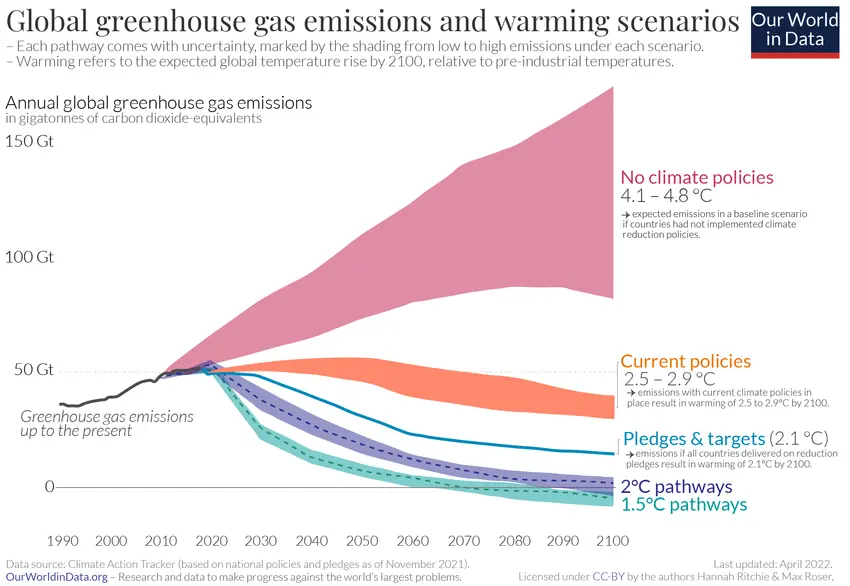A recent report from the Intergovernmental Panel on Climate Change (IPCC) serves as a stark reminder of the economic toll associated with climate change. Projections indicate that limiting global warming to 1.5°C would still result in a staggering US$54 trillion in damages by the end of the century. If temperatures rise to 2°C, the costs skyrocket to US$69 trillion, nearly equaling the current global annual income. However, these projections, considered optimistic by some, hinge on the assumption that immediate and substantial action is taken. This raises critical questions about the potential economic consequences should we fall short.
What happens beyond 2°C? The IPCC report includes no hard numbers, perhaps for good reason. There is just too much uncertainty. Still, if this is our most likely current future, it must be contemplated. One recent paper in Nature, though, tallied figures as high as $800 trillion by 2100. One 2020 study estimated economic losses due to climate change could be between 127 and 616 trillion dollars extra until 2100 with current commitments, compared to 1.5 °C or well below 2 °C compatible action action. Failure to implement current commitments raises economic losses to 150–792 trillion dollars until 2100. In this study, mitigation was achieved by countries optimising their own economy

The economic fallout from climate change is not distributed evenly. The global south, already facing economic challenges, is predicted to bear the brunt of the damage. Paradoxically, some countries may experience economic growth due to climate change, driven by the exposure of new resources as ice melts. Even within wealthier nations like the United States, the poorest regions are expected to be disproportionately affected.
Quantifying the impact of climate change purely in economic terms overlooks certain crucial aspects. Biodiversity loss, the acidification of oceans, and other intangible effects resist easy valuation. While economic figures provide a starting point, they fail to capture the full extent of the impending crisis.
Forecasting the economic consequences of climate change relies on Integrated Assessment Models (IAMs). These computer-based models intertwine predictions about population and economic growth with estimations of temperature increases. The "damage function" then calculates the potential losses associated with climate-induced changes, such as the loss of farmland or damage from rising sea levels.
A critical component of economic projections is the choice of a discount rate, reflecting the value assigned to immediate money over future promises. The rate selected holds substantial implications for economic forecasts. Conservative economists argue for higher discount rates, prioritizing immediate economic gains. In contrast, others advocate for lower rates, emphasizing the moral imperative of preserving future lives in the face of climate change.
The complexity of IAMs introduces challenges, as initial assumptions and omitted catastrophic outcomes can significantly impact predictions. Present models, for instance, do not account for potential "trigger points" where temperature increases might lead to a catastrophic spiral, impacting human labor and, consequently, the economy.
As we grapple with the economic ramifications of climate change, it becomes evident that the numbers provided are just a glimpse into the extensive and interconnected web of consequences. Balancing economic interests with ethical considerations, navigating predictive uncertainties, and acknowledging the unequal distribution of impacts are essential steps in crafting comprehensive strategies to mitigate the impending economic crisis posed by a changing climate.

Yorumlar